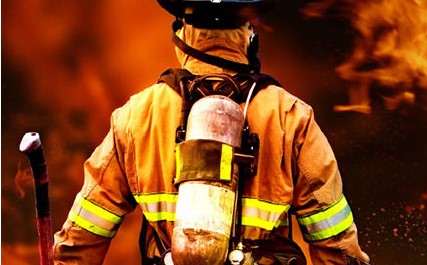For those who rely on breathing apparatus (BA) to perform their jobs, every ounce counts. Whether it’s a firefighter battling a blaze, a search and rescue team navigating tight spaces, or a medical professional tending to a patient in an emergency, the weight of the equipment can significantly impact efficiency and safety. This is where carbon fiber cylinders enter the scene, offering a revolutionary alternative to the traditional steel cylinders used in BA systems. Let’s explore the key differences between these two materials and why carbon fiber is taking the world of breathing apparatus by storm.
Material Matters: A Tale of Two Tanks
-Steel: The traditional workhorse, steel cylinders have long been the go-to for BA systems due to their undeniable strengths. Steel boasts exceptional durability and can withstand the high pressures required for compressed air breathing systems. Additionally, steel is a readily available and affordable material, making it a cost-effective choice for many applications. However, the weight of a fully charged steel cylinder is a significant drawback. This can lead to fatigue, reduced mobility, and hinder performance, especially during extended operations.
-Carbon Fiber: A game-changer in BA technology, carbon fiber cylinders are crafted from intricately woven carbon fibers embedded in a resin matrix. This innovative construction results in a dramatic weight reduction compared to steel counterparts. The lighter weight translates to several advantages:
a-Enhanced Mobility: Reduced weight allows wearers to move with greater agility and ease, crucial for firefighters navigating burning buildings or rescue teams maneuvering in confined spaces.
b-Reduced Fatigue: Lighter weight translates to less strain on the wearer’s body, leading to improved endurance and performance during strenuous activities.
c-Improved Comfort: A lighter BA system provides a more comfortable experience, especially when worn for extended periods.
While not as cheap as steel upfront, carbon fiber’s lighter weight can lead to long-term cost savings. Reduced wear and tear on the wearer’s body can minimize injuries and healthcare costs associated with heavy equipment use.
Performance Powerhouse: When Strength Meets Efficiency
Both steel and carbon fiber excel in containing pressurized air for breathing systems. However, there are some subtle differences in performance:
-Pressure Rating: Steel cylinders typically boast a higher maximum pressure rating than carbon fiber counterparts. This allows them to store more compressed air within the same volume, potentially translating to longer breathing times in some applications.
-Capacity: Due to the thicker walls required for higher pressure ratings, steel cylinders offer slightly more gas storage capacity compared to carbon fiber when considering the same size.
Safety First: Maintaining Top Performance
Both steel and carbon fiber cylinders require regular inspection and maintenance to ensure continued safe operation:
-Steel: Steel cylinders undergo a vital process called hydrostatic retesting every few years. During this test, the cylinder is pressurized to a level exceeding its working pressure to identify any weaknesses. This retesting ensures the structural integrity of the cylinder, guaranteeing user safety.
-Carbon Fiber: Carbon fiber cylinders have a non-extendable lifespan determined by the manufacturer. They cannot be hydrostatically retested like steel and must be decommissioned when they reach their expiry date. While this finite lifespan may impact overall cost of ownership, advancements are being made to extend the lifespan of carbon fiber cylinders.
Functionality Focus: Choosing the Right Tool for the Job
While carbon fiber boasts significant advantages, the optimal choice for BA systems depends on the specific application:
-Steel: The traditional choice remains ideal for situations where affordability, high pressure capacity, and long lifespan are key. Standard SCBA used in fire departments or industrial settings where weight is less critical often rely on steel cylinders.
-Carbon Fiber: When user comfort, mobility, and weight reduction are paramount, carbon fiber shines. This makes them ideal for advanced SCBA used in technical rescue operations, search and rescue teams operating in confined spaces, and lightweight BA systems for medical personnel on the move.
Post time: Jun-03-2024

